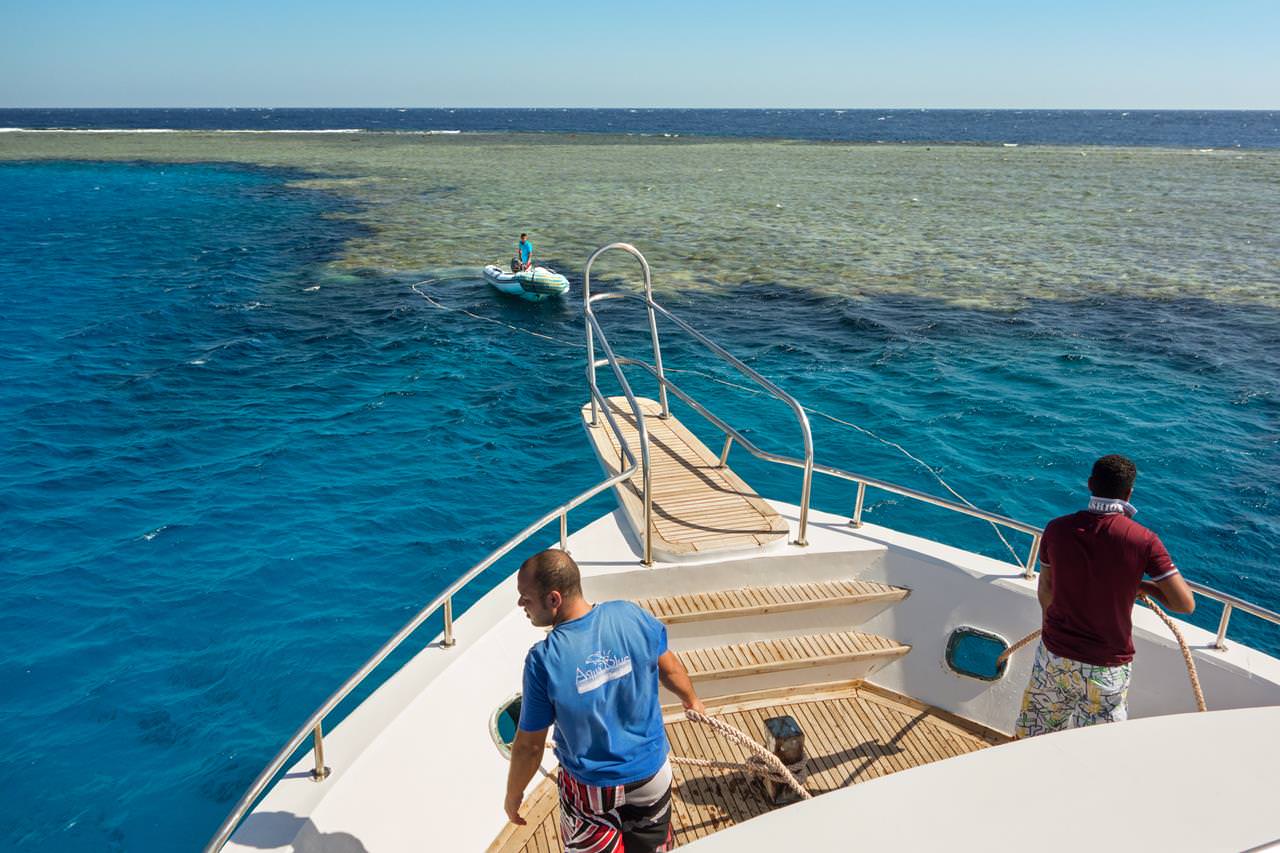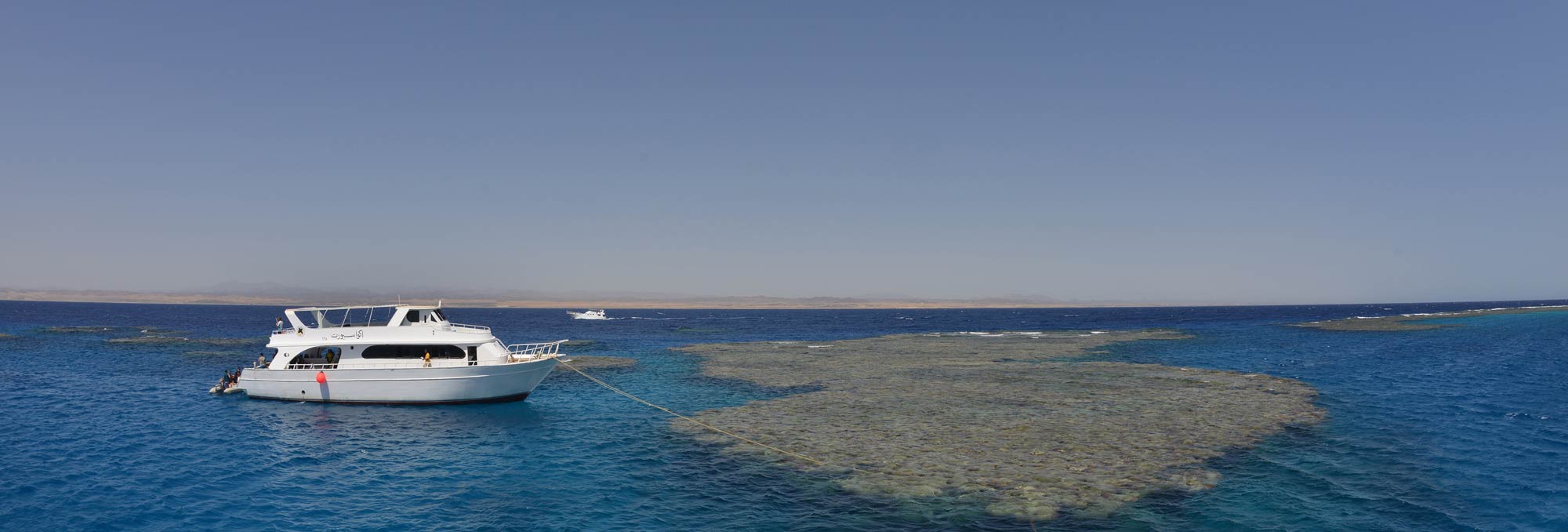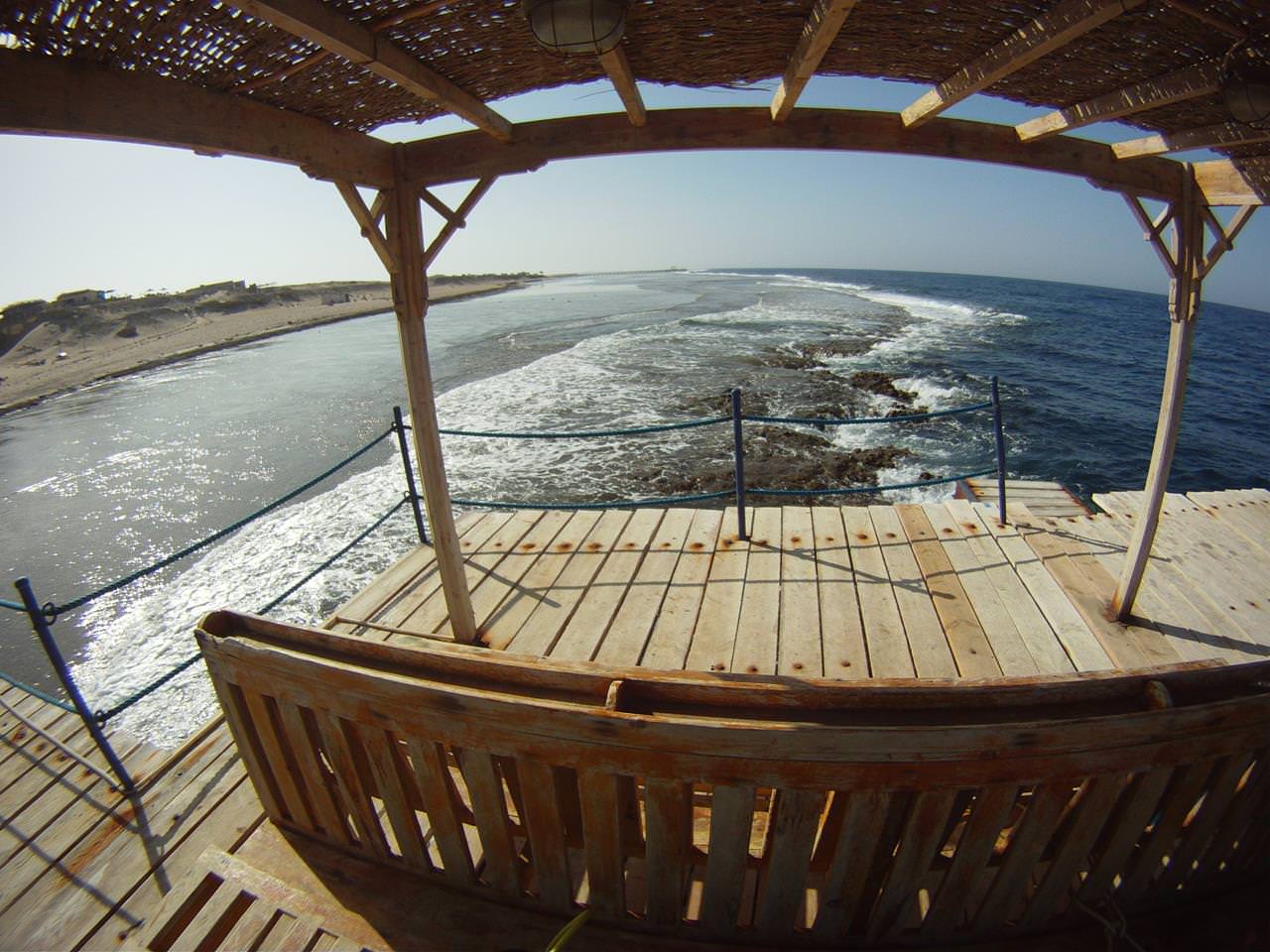Most of the diving trips take place by Mini bus. We offer a morning and an afternoon dive on a daily basis.
The travelling time is between 15 minutes to 1 hour depending on the location of the dive site. For more distant reefs 2 tank dives are offered.
All excursions are accompanied by one of our experienced, multilingual dive guides. They are in charge of all your diving needs during your stay and will show you the best dive sites around Marsa Alam.
Additional boat dives are offered regularly to spectacular reefs such as Elphinstone, Abu Dabbab and Samadai Reef. All in all, we offer a selection of around 30 different dive sites representing a rich diversity of marine flora and fauna.
The boats depart from the Jetty in Marsa Alam which is a 20 min. drive by minibus from the diving center, at 8:00 am. Meeting point is in the center. Depending on the distance to the dive site, the boats will return to the harbour between 4:30 pm and 5:30 pm.

All tanks and dive-gear will be loaded for you. We recommend taking cameras and diving computers after rinsing and cleaning back to your hotel room in the evening.
The boats are made out of wood with a single engine and with available space for up to 20 divers. They feature a large dive-deck with dive-platform, space for tanks and diving gear, a sundeck, shower/WC and the salon. Here the crew will serve a tasty lunch for only 7,-€ (state Nov 2023, subject to change) which incl. tea, coffee, soft drinks and water. All boats are equipped with O2, First Aid and VHF Radio.
All boat excursions are accompanied by our dive guides. They are in charge of all your diving needs during your stay and will show you the best dive sites around Marsa Alam. Two dives will be provided each day on different dive sites. 3rd dives and night dives are also available. Please discuss this with your dive-guide.

The famous dive site Elphinestone reef is located right in front of the Oasis Resort and is just a 20 min boat ride away by fast RIB . The boats are leaving from the protected bay of the Shagara Resort, 5 km away from the diving center.
One of our big advantages is the stunning reef just in front of the Diving Center. Our house reef offers optimal conditions for shore diving, night dives and the first open water dives during courses.

Dives are made from the jetty, which is built out over the edge of the reef. The sea is about 12 m deep here. The reef slopes gently down before dropping off sharply into the blue! It can be dived to the north or to the south, depending on the current.
The reef is covered with hard and soft corals and is populated with large numbers of typical Red Sea fish.
A real highlight can be sightings of large pelagic fish travelling along the reef. Along with manta rays and turtles, even dolphins and Whale sharks have been sighted.
One dive at the house reef per day is included in the Standard dive box. This also includes early-morning dives and night dives.
IMPORTANT: Bad weather conditions on a few days of the year, with strong wind and rough swell, can make access to the reef more difficult or even occasionally impossible.
Free: Nitrox 32 for all divers with a valid Nitrox license
Our diving boats and mini busses are equipped with oxygen and first-aid-kits, as well as emergency radios and telephones. The nearest medical facility is in Marsa Alam or, in severe cases treatment is provided in Hurghada. A decompression chamber is only 5 km away in Marsa Shagra.
One of the many services offered by Sinai Divers are the free transfers for guests staying in other Hotels. Pick up times are arranged according to the distance from the hotel and departure times of the dive trips. Meeting point for all guest is always the dive center.
Safety in diving first. This has top priority at Sinai Divers.
Therefore regular maintained equipment of well known manufactures is of great importance.
The center is equipped with the following diving gear :
Divers and students diving on the house reef in front of the center, can store their personal belongings in the guest equipment-room. Showers and WC are located here as well in a separate building.
There are separate freshwater-basins to rinse your diving-gear and photo and video equipment
The area around Marsa Alam is rated as one of the best diving destinations in the Red Sea and is one of the few diving areas in the region which is not overcrowded and still very much unspoiled.
There is something here for everyone, dives from the beach on a gently sloping reef, trips to more remote bays or by boat to legendary reefs such as Elphinstone, Abu Dabbab and Samadai Reef (Dolphin House).
The walls of the famous Elphinstone reefs (regular oceanic white-tip shark sightings) covered with lush soft corals, colorful sponges and huge gorgonian fans, cast their spell over everyone. Abu Dabbab (swim-throughs and caves) and Samadai Reef (large schools of dolphins) are further highlights.
The house reef, which drops down fast and steeply, has everything beginners and experienced divers could wish for.
We also offer full day excursions by mini bus to more remote bays further south along the coast, to dive some of the countless reefs or ship wrecks.
Detailed information on individual dive sites you’ll find in the area Dive Sites.
You plan to organise a dive trip to Marsa Alam with your friends , dive club or dive shop?
We know that is not always an easy task to please everyone and to put the trip together. We at Sinai Divers are more then happy to support you with special group arrangements and special group rates .
Wether your group of advanced divers want to experience the best diving there is together or you plan to take a diving course as a group , we provide all the logistic and facilities you need for a memorable stay with Sinai Divers .
Depending on the size of your group we offer additional benefits specifically such as private boats and free places (subject to availability and conditions).
Contact for a detailed offer: info@sinaidivers.com.